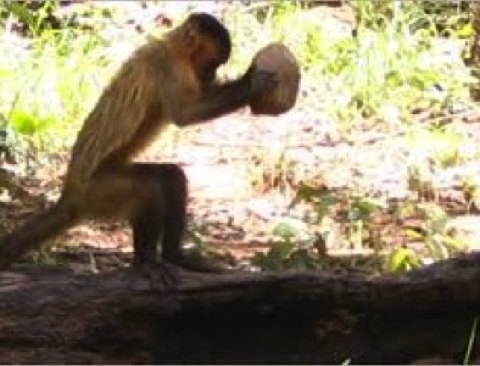Cracking a nut with a stone on an anvil: at first, we thought only humans and chimpanzees could do it. But recent findings show that wild capuchin monkeys also know how to use tools. There is a long tradition of primatological research at ISTC, and the Unit of Cognitive Primatology (UCP) was one of the first in the world to study the cognitive skills of capuchin monkeys.
Stone tool use is commonly seen as a human trademark. Only chimpanzees seem to share this skill to some extent, with their ability to select stones for different uses.
But lately this vision has changed: some New World wild monkeys also use rocks as food-gathering tools. Wild bearded capuchins, Cebus libidinosus, use stone tools to probe for food, dig it out of the ground and crack open encased food. Capuchin monkeys separated from the human lineage around 35 million years ago, and their sophisticated behaviour was found to have commonalities with that of early hominids.
At ISTC the Unit of Cognitive Primatology (UCP), one of the world’s leading primate cognition research groups, is focusing on tool use. The UCP team was one of the first to watch wild capuchin monkeys put palm nuts on anvils and smash them open with stones. Since 2005, UCP contributed to the EthoCebus research project in collaboration with Brazilian and American researchers. The project aims to study the behaviour and ecology of wild bearded capuchins in Piauì, Brazil. These monkeys were found to be able not just to use tools but also to select the most suitable ones. But are these intentional actions? Do monkeys know the requiremnst necessary to a stone tool to be effective? Is their selection related to the specific task at hand?
The latest findings say the answer is "yes": capuchins know that some stones work better than others, and make their choice accordingly. To crack palm nuts, for instance, adult capuchins transport heavier and harder stones than the ones they use to crack less resistant food items. They therefore deliberately select stones of appropriate weight and hardness to use as hammers: like chimpanzees and humans, their use of tools is planned.
Contact: Elisabetta Visalberghi
ISTC Group: Unit of Cognitive Primatology


